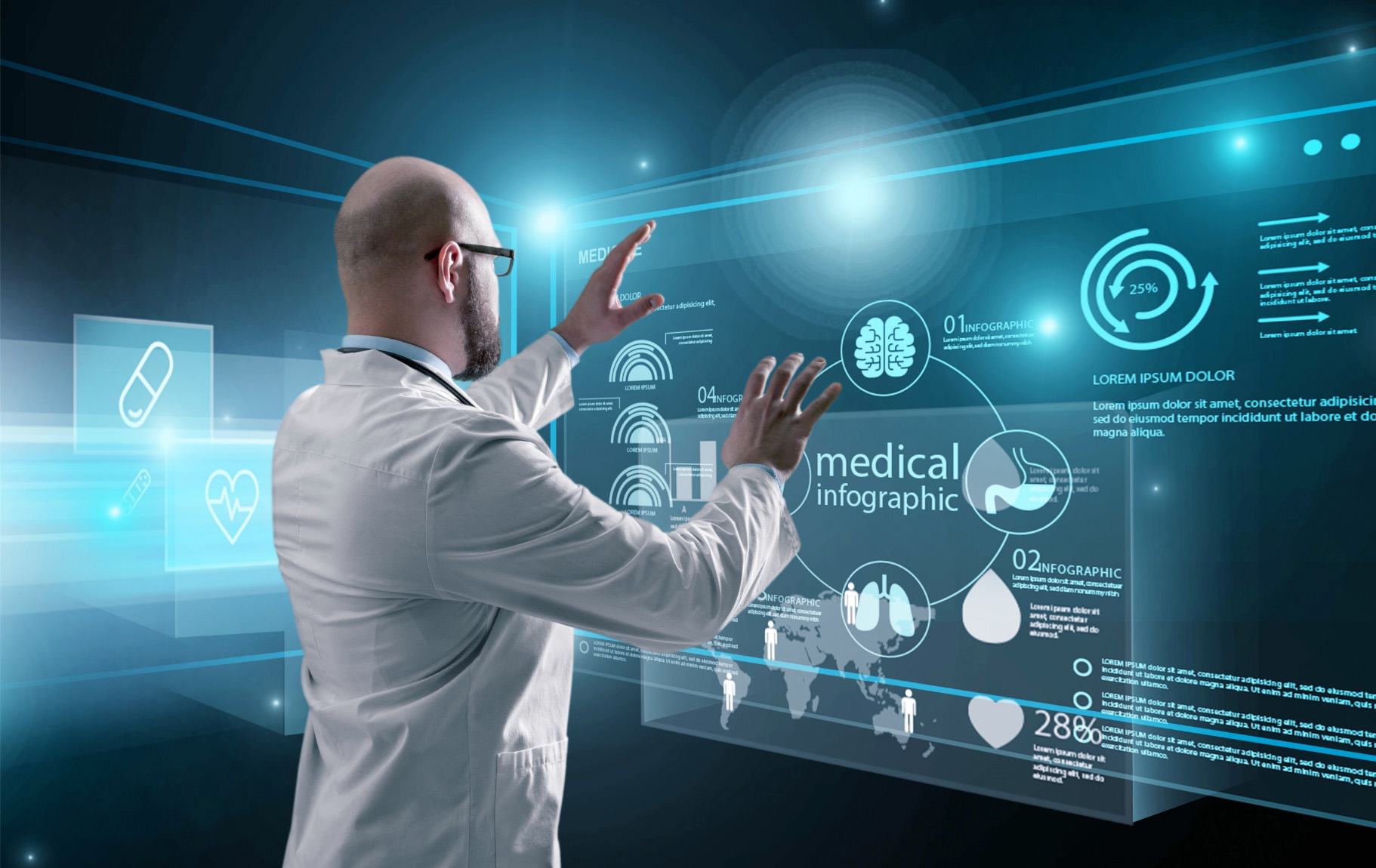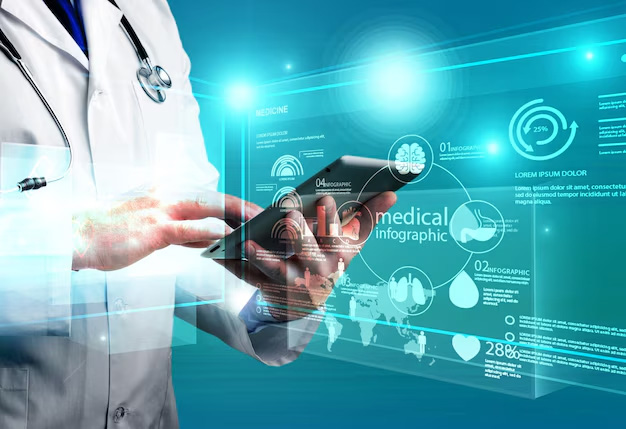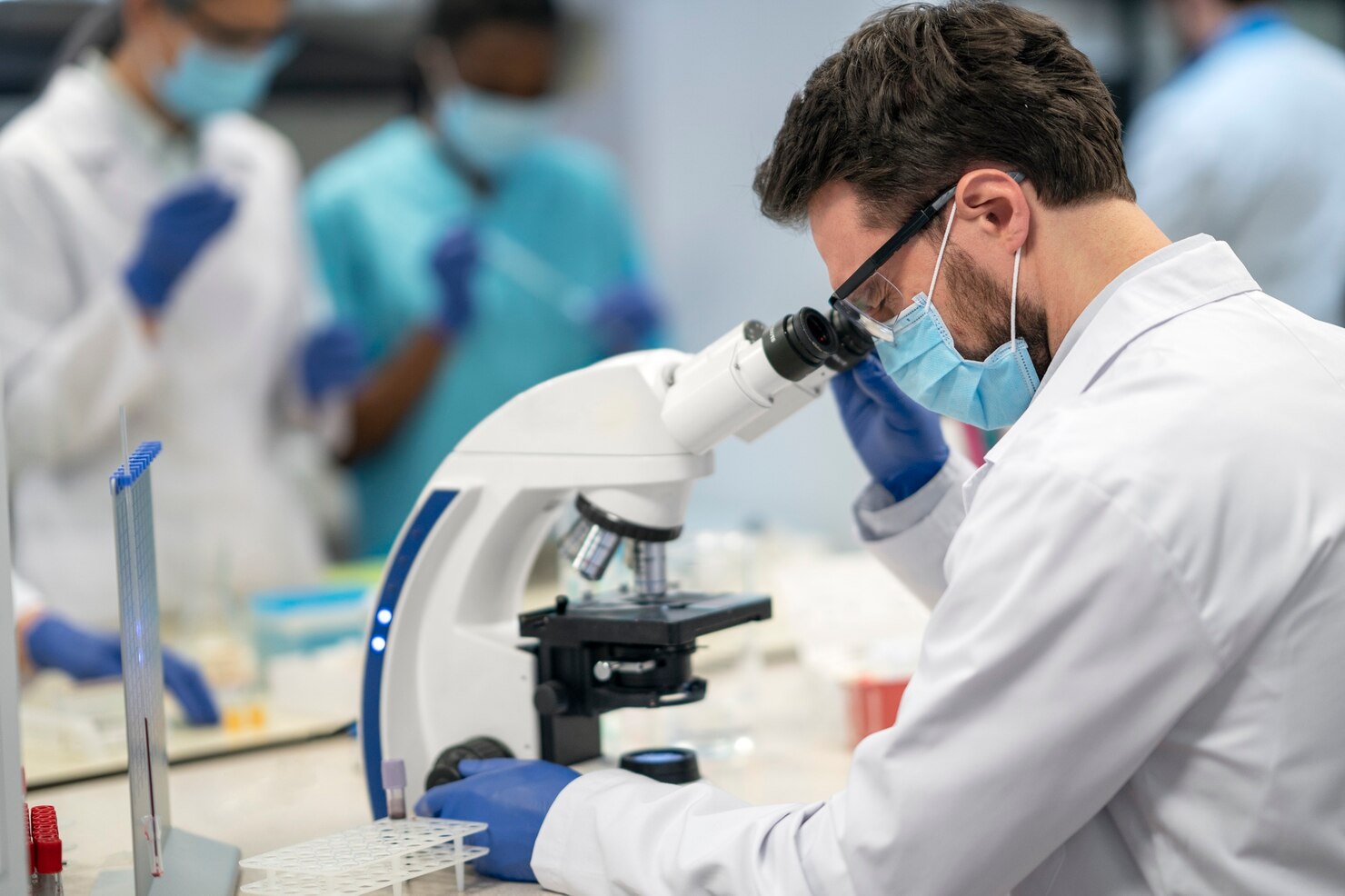Radiomics: AI in Medical Imaging
1. Introduction
Medical imaging has played a crucial role in diagnosing and treating various diseases, offering detailed internal views of the human body. However, traditional imaging interpretation largely depends on human expertise, which can be subjective and prone to variability. Radiologists often rely on visual assessments, which can sometimes overlook subtle patterns indicative of disease progression. This limitation has led to the emergence of Radiomics, an AI-powered approach that extracts vast amounts of quantitative data from medical images to improve diagnostic precision, prognosis, and treatment strategies.
Radiomics leverages artificial intelligence (AI) and machine learning (ML) to analyse high-dimensional datasets obtained from imaging modalities such as MRI, CT, and PET scans. Unlike conventional imaging techniques that rely on qualitative assessments, Radiomics converts imaging data into numerical features, enabling a more objective and reproducible analysis. This approach facilitates early disease detection, treatment response prediction, and personalized medicine by identifying patterns beyond the scope of human observation.
With recent advancements in AI and computational techniques, Radiomics is rapidly evolving. Techniques such as deep learning-based Radiomics (DLR) and self-supervised learning are improving feature extraction and reducing dependency on manually labelled data. Additionally, the integration of multimodal imaging and genomic data—known as radiogenomics—is revolutionizing precision medicine by uncovering hidden correlations between imaging biomarkers and genetic mutations.
As Radiomics gains traction in clinical practice, regulatory frameworks and validation protocols are being developed to ensure its widespread adoption. With AI-driven automation, federated learning for privacy-preserving collaborations, and explainable AI models, Radiomics is poised to redefine medical imaging and enhance patient outcomes significantly. This paper explores the fundamentals, applications, challenges, and future directions of Radiomics, highlighting its transformative impact on modern healthcare.
2. What is Radiomics?
Radiomics is an advanced field of medical imaging analysis that involves extracting a large number of quantitative features from medical scans to uncover hidden patterns in diseases. These features, which include shape, texture, intensity, and spatial relationships, provide insights beyond what can be seen with the human eye. By applying artificial intelligence (AI) and machine learning (ML) algorithms, Radiomics translates complex imaging data into meaningful patterns that aid in diagnosis, prognosis, and treatment planning.
At its core, Radiomics follows a structured workflow that includes image acquisition, preprocessing, feature extraction, feature selection, and predictive modelling. Image acquisition involves obtaining high-quality scans from modalities like MRI, CT, and PET, ensuring standardized imaging protocols to minimize variations. The preprocessing stage focuses on enhancing image quality by normalizing pixel intensity, removing artefacts, and segmenting regions of interest.
Feature extraction is a key step where mathematical algorithms compute hundreds to thousands of imaging biomarkers. These biomarkers are categorized into first-order statistical features (e.g., mean pixel intensity), shape-based features (e.g., tumour roundness), texture features (e.g., spatial heterogeneity), and higher-order features derived from wavelets or deep learning models. Feature selection techniques then refine the dataset by eliminating redundant or irrelevant features to improve predictive performance.
Machine learning algorithms such as Random Forest, Support Vector Machines (SVM), Neural Networks, and Convolutional Neural Networks (CNNs) analyse the extracted features to create predictive models. Recent advancements, including deep learning-based Radiomics (DLR), enable automatic feature learning without manual intervention. Furthermore, multimodal AI models integrating clinical, genomic, and imaging data are enhancing the accuracy of Radiomics predictions.
Radiomics is bridging the gap between traditional medical imaging and precision medicine by providing objective, data-driven insights. As AI and computational power continue to advance, Radiomics is expected to play an increasingly important role in clinical decision-making, transforming the landscape of diagnostic and therapeutic strategies.
3. Applications of Radiomics
Radiomics has a wide range of applications across various medical fields, making it an essential tool in modern healthcare. By extracting high-dimensional features from medical images, Radiomics provides valuable insights that can significantly improve disease diagnosis, prognosis, and treatment monitoring. Below are some of the key areas where Radiomics is making a transformative impact:
3.1 Oncology
One of the most significant applications of Radiomics is in oncology. Radiomics aids in tumour detection, classification, and prediction of tumour behaviour, allowing for more accurate treatment planning. By identifying imaging biomarkers, Radiomics enhances precision oncology, where treatments are tailored to individual patients based on their tumour characteristics. Recent studies have demonstrated that Radiomics can predict immunotherapy response, enabling oncologists to select the most effective therapies.
Additionally, radiogenomics, which integrates Radiomics and genomic data, is improving cancer research by linking imaging features with genetic mutations. This approach helps in understanding tumour heterogeneity and drug resistance mechanisms. Moreover, AI-driven Radiomics is now being combined with liquid biopsy, a non-invasive technique that detects circulating tumour DNA in blood samples. This integration is paving the way for next-generation, non-invasive cancer diagnostics.
3.2 Neurology
Radiomics has shown great potential in neurology, particularly in identifying imaging biomarkers for neurodegenerative diseases such as Alzheimer’s, Parkinson’s, and multiple sclerosis. By analysing subtle changes in brain structure and texture, Radiomics enables early disease detection, which is crucial for timely interventions. It also helps in monitoring disease progression and evaluating the effectiveness of treatments.
In stroke management, AI-powered Radiomics has improved lesion segmentation, aiding in more precise prognosis and treatment strategies. Researchers are also exploring Radiomics-based methods to assess traumatic brain injury (TBI) and detect early-stage multiple sclerosis (MS) through detailed brain lesion analysis. With continued advancements, Radiomics is expected to play an increasing role in the diagnosis and management of neurological disorders.
3.3 Cardiology
Radiomics has been instrumental in improving the diagnosis and prognosis of cardiovascular diseases. By analysing patterns in cardiac imaging, Radiomics enhances the detection of coronary artery disease, heart failure, and arrhythmias. AI-driven Radiomics models can predict cardiovascular events with high accuracy using cardiac MRI and CT scans, leading to better risk stratification and early interventions.
New developments in Radiomics-based risk stratification for sudden cardiac death are underway, providing valuable insights into high-risk patients. Moreover, researchers are working on integrating Radiomics with wearable health monitoring devices to offer real-time cardiac risk assessments, enabling continuous and personalized heart health monitoring.
3.4 Pulmonology
Radiomics plays a critical role in the early diagnosis and management of lung diseases such as lung cancer, chronic obstructive pulmonary disease (COPD), and pulmonary fibrosis. AI-driven Radiomics has demonstrated high accuracy in assessing COVID-19 severity and predicting long-term lung damage from CT scans.
Additionally, Radiomics-based methods are now being used to evaluate pulmonary embolisms, providing precise imaging biomarkers for better risk assessment and treatment decisions. Emerging studies are also focusing on early-stage interstitial lung disease detection, which can lead to timely interventions before severe fibrosis develops.
3.5 Personalized Medicine
Radiomics is a cornerstone of personalized medicine, offering non-invasive insights into disease characteristics at an individual level. By integrating Radiomics with genomics, liquid biopsy, and pharmacogenomics, researchers are developing AI-driven models that predict drug responses and optimize treatment plans based on imaging biomarkers. Future advancements include adaptive therapy models that continuously update treatment strategies based on real-time Radiomics monitoring.
3.6 Infectious Diseases
Radiomics is emerging as a valuable tool in the study of infectious diseases. The ability to extract quantitative imaging features from medical scans has proven useful in diagnosing and managing conditions such as tuberculosis, sepsis, and COVID-19. AI-powered Radiomics models have shown high accuracy in assessing COVID-19 severity by analysing lung CT scans. These models can predict disease progression, long-term lung damage, and patient outcomes, aiding in timely medical interventions.
In tuberculosis diagnosis, Radiomics helps in differentiating between active and latent infections by analysing patterns in chest X-rays and CT scans. This non-invasive approach reduces dependency on sputum tests, which may not always be reliable. Similarly, Radiomics is being explored in sepsis detection, where AI-driven biomarkers extracted from imaging data could improve early diagnosis and risk stratification, potentially reducing mortality rates. Future research is focused on differentiating bacterial and viral pneumonia using Radiomics, which can help optimize antibiotic use and reduce antimicrobial resistance.
As AI models continue to evolve, integrating Radiomics with molecular and clinical data could significantly enhance infectious disease diagnostics, leading to more effective and personalized treatment strategies.
4. Why is Radiomics One of the Top-Notch Research Areas?
Radiomics is gaining significant attention in medical research due to its potential to revolutionize disease diagnosis, treatment planning, and patient outcomes. Several factors contribute to its growing prominence:
- Non-Invasive Diagnostics – Radiomics reduces the need for invasive procedures such as biopsies by providing detailed imaging biomarkers.
- Early Disease Detection – Radiomics can detect abnormalities before clinical symptoms appear, enabling early intervention and improving prognosis.
- Data-Driven Insights – The ability to analyse vast amounts of imaging data enhances diagnostic accuracy and reduces subjectivity.
- AI and Machine Learning Integration – The fusion of Radiomics with deep learning and machine learning algorithms has significantly improved predictive accuracy and automation in clinical decision-making.
- Advancements in Personalized Medicine – Radiomics plays a crucial role in tailoring treatment plans based on individual patient characteristics, leading to better outcomes.
- Multimodal Imaging Fusion – The integration of multiple imaging modalities, such as CT, MRI, and PET, enables a comprehensive understanding of diseases.
- Rapid AI & Big Data Progress – Continuous advancements in AI and computational power enhance feature extraction and classification, improving Radiomics applications.
- Regulatory and Clinical Adoption – Efforts to standardize Radiomics protocols and secure regulatory approvals have paved the way for clinical implementation.
- Explainable AI in Radiomics – A growing focus on making AI models interpretable ensures that clinicians trust Radiomics-based decision-making.
- Federated Learning & Privacy -Preserving AI – Privacy-focused AI models enable global collaborations without the need for raw patient data sharing, ensuring security and compliance.
With ongoing research and technological advancements, Radiomics is poised to become a cornerstone of modern medical imaging, leading to breakthroughs in precision medicine.
5. Radiomics Architecture
The Radiomics workflow consists of several key steps that ensure accurate feature extraction and clinical utility. The architecture follows a structured process:
5.1 Image Acquisition
The first step involves obtaining standardized medical images from various modalities, ensuring consistency in imaging protocols. Common imaging techniques include:
- Magnetic Resonance Imaging (MRI)
- Computed Tomography (CT)
- Positron Emission Tomography (PET)
- X-ray and Ultrasound
5.2 Image Preprocessing
Preprocessing is a crucial step to enhance image quality and ensure reproducibility. It involves:
- Noise reduction and artefact removal
- Intensity normalization
- Image segmentation (delineating regions of interest)
- Alignment and registration to maintain consistency
5.3 Feature Extraction
Radiomics extracts a variety of quantitative imaging features, categorized as:
- First-order statistical features – Describe the distribution of pixel intensities (e.g., mean, variance, skewness)
- Shape-based features – Assess geometric properties of structures (e.g., volume, surface area, sphericity)
- Texture features – Capture patterns within an image (e.g., gray-level co-occurrence matrix, entropy, contrast)
- Higher-order features – Derived from advanced transformations such as wavelets and deep learning-driven representations
5.4 Feature Selection and Model Building
To enhance model performance, feature selection techniques remove redundant and irrelevant data. Machine learning algorithms then analyse the extracted features, including:
- Random Forest
- Support Vector Machines (SVM)
- Neural Networks and Deep Learning Models (CNNs, Transformers)
5.5 Clinical Validation and Interpretation
Before clinical adoption, Radiomics models undergo rigorous validation, including:
- Cross-validation and external validation
- Regulatory approval processes
- Explainability testing to ensure AI-driven predictions are interpretable by clinicians
With these structured steps, Radiomics provides a robust framework for integrating AI-driven imaging analysis into clinical practice.
6. Challenges and Limitations of Radiomics
Despite its potential, Radiomics faces several challenges that need to be addressed for widespread clinical adoption:
- Standardization Issues – Variability in imaging protocols, equipment, and data acquisition affects the reproducibility of Radiomics features.
- Data Quality and Bias – Differences in image resolution, segmentation techniques, and feature extraction methods can introduce bias into Radiomics models.
- Computational Complexity – Processing high-dimensional imaging data requires significant computational resources and expertise in AI model development.
- Lack of Large-Scale Validation – Many Radiomics studies are conducted on small, retrospective datasets, limiting their generalizability to broader patient populations.
- Regulatory and Ethical Concerns – The integration of AI in medical imaging raises concerns about patient data privacy, security, and compliance with healthcare regulations.
- Interpretability of AI Models – Black-box AI models in Radiomics may be difficult for clinicians to interpret, affecting their trust and adoption in decision-making.
- Integration with Clinical Workflow – Implementing Radiomics into standard clinical practice requires seamless integration with electronic health records (EHR) and physician workflows.
- Cost and Accessibility – Developing and maintaining AI-driven Radiomics tools can be costly, limiting access in resource-constrained healthcare settings.
Addressing these limitations through improved standardization, regulatory approvals, and enhanced AI transparency will be crucial for Radiomics to realize its full potential in clinical applications.
7. Regulatory and Standardization Efforts
To facilitate the clinical adoption of Radiomics, various regulatory bodies and research organizations are working towards standardization and validation efforts:
- The Radiological Society of North America (RSNA) and The Quantitative Imaging Biomarkers Alliance (QIBA) are developing standardized imaging protocols to ensure consistency in Radiomics data.
- The U.S. Food and Drug Administration (FDA) is evaluating AI-based Radiomics tools to establish safety and efficacy guidelines for clinical use.
- The European Society of Radiology (ESR) is promoting harmonization initiatives to align Radiomics research with clinical applications across Europe.
- The International Biomarker Standardization Initiative (IBSI) is creating standardized methodologies for feature extraction and validation in Radiomics studies.
- Federated Learning Approaches are being explored to enable multi-institutional collaborations while preserving patient data privacy and compliance with GDPR and HIPAA regulations.
With ongoing regulatory efforts and advancements in AI interpretability, Radiomics is moving closer to becoming a reliable tool for precision medicine, ultimately improving patient care through data-driven imaging insights.
8. Future of Radiomics
The future of Radiomics is promising, with continuous advancements in artificial intelligence, machine learning, and big data analytics. Several emerging trends are shaping the evolution of Radiomics and its integration into clinical practice:
- Multi-Omics Integration – The combination of Radiomics with genomics, proteomics, and radiogenomics is expected to enhance disease characterization and improve personalized treatment strategies. Multi-omics approaches will allow for a comprehensive understanding of disease mechanisms, paving the way for precision medicine.
- Federated Learning and Blockchain for Medical Data – Privacy-focused AI models are being developed to facilitate global collaborations without the need for raw data sharing. Blockchain technology can provide secure, immutable records of imaging and Radiomics data, ensuring transparency and compliance with regulatory standards.
- Self-Supervised and Unsupervised Learning – These techniques reduce the dependency on manually labelled datasets, making Radiomics more scalable and accessible for broader clinical applications.
- AI-Driven Adaptive Therapy Models – Real-time monitoring of treatment response using Radiomics biomarkers will allow for adaptive treatment strategies, improving therapeutic outcomes.
- Integration with Liquid Biopsy – Radiomics, combined with liquid biopsy, could provide a non-invasive and comprehensive diagnostic approach for cancer and other diseases.
- Automated AI Workflows – AI automation in Radiomics feature extraction and interpretation will enhance efficiency, reducing the time and expertise required for medical imaging analysis.
- Personalized Drug Response Predictions – AI-driven Radiomics models will advance pharmacogenomics research, enabling precise drug selection based on individual imaging biomarkers.
- Multimodal AI Models – The fusion of imaging, clinical, and genomic data will enhance diagnostic accuracy, offering a more holistic view of patient health.
As Radiomics continues to evolve, its integration with AI and multi-omics data will further solidify its role in transforming precision medicine, enabling earlier disease detection, improved treatments, and better patient outcomes.
Conclusion
Radiomics is revolutionizing medical imaging by extracting high-dimensional quantitative features from scans, providing deeper insights into disease progression, treatment response, and patient outcomes. By leveraging artificial intelligence and machine learning, Radiomics enhances diagnostic accuracy, improves prognosis, and facilitates personalized medicine.
The field’s rapid advancements in deep learning, multimodal imaging, and privacy-preserving AI models are driving its clinical adoption. Standardization efforts and regulatory frameworks are also accelerating the transition of Radiomics from research to clinical practice.
With its ability to provide non-invasive diagnostics, early disease detection, and personalized treatment strategies, Radiomics is poised to become a cornerstone of modern medical imaging. As technology advances, Radiomics will continue to shape the future of precision medicine, paving the way for AI-powered healthcare innovations that enhance patient care and global health outcomes.




